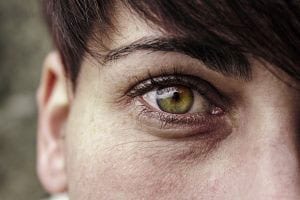Welcome to the Rare Classroom, a new series from Patient Worthy. Rare Classroom is designed for the curious reader who wants to get informed on some of the rarest, most mysterious diseases and conditions. There are thousands of rare diseases out there, but only a very small number of them have viable treatments and regularly make the news. This series is an opportunity to learn the basics about some of the diseases that almost no one hears much about or that we otherwise haven’t been able to report on very often.
Eyes front and ears open. Class is now in session.

The disease that we will be learning about today is:
Stargardt Disease
Sometimes called juvenile macular degeneration.
What is Stargardt Disease?
- Stargardt disease is an inherited disorder of the retina – the tissue at the back of the eye that senses light. The disease typically causes vision loss during childhood or adolescence, although in some forms, vision loss may not be noticed until later in adulthood.
- Stargardt disease is the most common form of inherited juvenile macular degeneration. The progressive vision loss associated with Stargardt disease is caused by the death of photoreceptor cells in the central portion of the retina called the macula.
- Stargardt disease — also called fundus flavimaculatus or Stargardt’s macular dystrophy (SMD) — affects approximately one in 10,000 people and is characterized by central vision loss early in life.
- While there are currently no treatments for Stargardt disease, several promising avenues of research are being explored, including gene, stem cell, and drug therapies.
How Do You Get It?
- The progressive loss of vision associated with Stargardt disease is caused by death of photoreceptor cells called cones, which are concentrated in the central part of the retina (the macula). Loss of cone photoreceptors causes a significant reduction of visual acuity and loss of color perception.
- Genetic analysis suggests that Stargardt disease may actually be at least three different conditions.
- Defects in the ABDA4 gene is a known cause of the disease.
- Other potential causes may include mutations impacting the ELOVL4 and PROM1 genes.
What Are The Symptoms?
- Symptoms of Stargardt disease include:
- Bilateral, decreased central vision in childhood or young adulthood
- Visual acuity may start at the 20/40 level and later decline to 20/200 or slightly worse
- Central scotoma (blind spot in central vision).
- Abnormal color vision
- Photophobia — an abnormal visual intolerance of light
- Night blindness
- Vision loss from Stargardt disease generally begins to show up within the first 20 years of a young person’s life, particularly in early childhood.
- It’s difficult to pinpoint exactly when retinal damage will occur or how fast it will progress, because variations can occur even among family members with similar inherited tendencies.
- In some cases, signs of Stargardt disease appear in early childhood; but a person with Stargardt (particularly the fundus flavimaculatus version of the disease) may reach middle age before vision problems are noticed.
- Stargardt disease causes vision loss in the range of 20/50 to 20/200 on a standard eye chart. (In the United States, legal blindness is defined as visual acuity of 20/200 or worse while wearing corrective lenses.) Those who have the fundus flavimaculatus form of the disease, however, are likely to experience even more severe vision loss
- Symptoms of Stargardt disease can include blurry or distorted vision, inability to see in low lighting, and difficulty recognizing familiar faces. In late stages of Stargardt, color vision also may be lost.
How Is It Treated?
- Some research indicates that exposure to bright light may play a role in triggering the retinal damage that occurs with Stargardt disease. While there is no known treatment for Stargardt disease at this time, people with the condition often are advised to wear eyeglasses or sunglasses that block 100 percent of UV light to reduce the possibility of additional eye damage caused by the sun.
- In addition to this, they are also advised not to eat foods that are high in vitamin A or use vitamin A supplements or beta-carotene supplements. This is very important in that a toxic build up of vitamin A is what is constantly killing the photoreceptors of the eye. By not putting much extra vitamin A in the body, one can make sure that they are not contributing to the build up of vitamin A, the thing that is killing their photoreceptor cells. These are very easy things to do that could help slow the progression of Stargardt disease.
- Results from two early clinical trials show that it may be possible to use human embryonic stem cells as treatment for the dry form of macular degeneration, according to presentations given at AAO 2017, the 121st Annual Meeting of the American Academy of Ophthalmology.
- Stem cells injected into the eye appear to have replaced the missing cells damaged by the disease, with no serious side effects.
- One study suggests it may have even improved patients’ vision.
- There are no approved treatments available for Stargardt disease, and other therapeutic approaches do not target its root cause.
- Poor diet, smoking, and obesity may contribute to the progression of symptoms.
- While most patients will eventually become legally blind, life expectancy for patients is not affected.
Where Can I Learn More???
- Check out our cornerstone on this disease here.
- Learn more about this illness from the Foundation Fighting Blindness.







